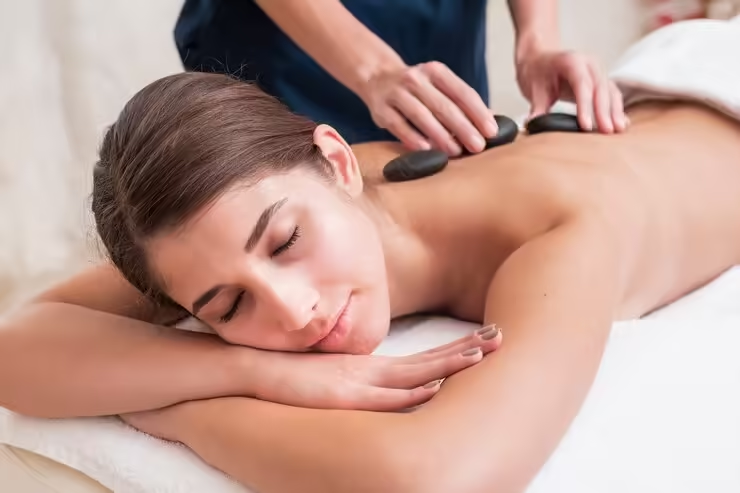Introduction
Menstrual cramps, medically known as dysmenorrhea, are a common and often debilitating symptom experienced by many women during their menstrual cycle. These cramps can range from mild to severe and can significantly impact daily activities. While over-the-counter medications can provide relief, many women seek natural and home remedies to manage their symptoms. This comprehensive guide explores various home remedies for menstrual cramps, their effectiveness, and how to incorporate them into daily life.
Understanding Menstrual Cramps
What Causes Menstrual Cramps?

Menstrual cramps are caused by the contraction of the uterine muscles as the body sheds the lining of the uterus. This process is triggered by the release of prostaglandins, hormone-like substances that promote inflammation and pain. Higher levels of prostaglandins are associated with more severe menstrual cramps.
Types of Dysmenorrhea:
- Primary Dysmenorrhea: Common menstrual cramps that are not associated with any other medical condition. These cramps usually begin one to two days before menstruation and last for a few days.
- Secondary Dysmenorrhea: Menstrual cramps caused by an underlying reproductive health issue, such as endometriosis, fibroids, or pelvic inflammatory disease (PID).
The Impact of Menstrual Cramps on Daily Life
Menstrual cramps can affect various aspects of a woman’s life, including physical health, mental well-being, and overall quality of life. Understanding these impacts is crucial for recognizing the importance of managing menstrual cramps effectively.
Physical Health Consequences
- Pain and Discomfort: Severe cramps can cause significant pain and discomfort, affecting daily activities and productivity.
- Fatigue: Persistent pain and inflammation can lead to fatigue and reduced energy levels.
- Gastrointestinal Issues: Menstrual cramps are often accompanied by gastrointestinal symptoms such as nausea, diarrhea, and bloating.
Psychological and Emotional Effects
- Mood Disorders: Menstrual cramps can contribute to mood swings, irritability, and anxiety.
- Emotional Instability: The physical discomfort and pain can lead to increased emotional distress and reduced quality of life.
Behavioral Changes
- Sleep Disturbances: Pain and discomfort can interfere with sleep quality and duration.
- Reduced Physical Activity: Severe cramps can limit physical activity and exercise.
Home Remedies for Menstrual Cramps
Herbal Teas
Herbal teas have been used for centuries to alleviate menstrual cramps and promote relaxation. They contain natural compounds that can help reduce inflammation and relax the uterine muscles.
Popular Herbal Teas for Menstrual Cramps:
- Chamomile Tea: Known for its anti-inflammatory and muscle-relaxing properties.
- Peppermint Tea: Helps to relieve muscle spasms and reduce pain.
- Ginger Tea: Contains anti-inflammatory compounds that can help reduce pain and inflammation.
- Cinnamon Tea: Known for its antispasmodic and anti-inflammatory properties.
How to Use:
- Brew a cup of chamomile, peppermint, ginger, or cinnamon tea and drink slowly.
- Consider adding honey or lemon for additional benefits.
Heat Therapy
Applying heat to the lower abdomen can help relax the uterine muscles and reduce menstrual cramps. Heat therapy increases blood flow to the area, which can help alleviate pain.
Methods of Heat Therapy:
- Heating Pad: Use an electric heating pad or a hot water bottle on the lower abdomen.
- Warm Bath: Soak in a warm bath to relax the muscles and reduce pain.
- Warm Compress: Use a warm, damp towel as a compress on the lower abdomen.
How to Use:
- Apply heat for 15-20 minutes at a time.
- Repeat as needed throughout the day.
Essential Oils and Aromatherapy
Essential oils and aromatherapy can help reduce menstrual cramps and promote relaxation. Essential oils contain natural compounds that can help alleviate pain and reduce inflammation.
Popular Essential Oils for Menstrual Cramps:
- Lavender Oil: Known for its calming and pain-relieving properties.
- Clary Sage Oil: Helps to balance hormones and reduce menstrual cramps.
- Peppermint Oil: Contains menthol, which can help relieve muscle spasms and reduce pain.
- Eucalyptus Oil: Known for its anti-inflammatory and analgesic properties.
How to Use:
- Add a few drops of essential oil to a diffuser and inhale the aroma.
- Dilute essential oils with a carrier oil (such as coconut oil) and massage onto the lower abdomen.
- Add a few drops of essential oil to a warm bath.
Dietary Changes

Certain dietary changes can help reduce menstrual cramps by reducing inflammation and promoting overall health.
Foods to Include:
- Fruits and Vegetables: Rich in antioxidants and anti-inflammatory compounds.
- Whole Grains: Provide sustained energy and reduce inflammation.
- Lean Proteins: Help to balance hormones and reduce muscle tension.
- Omega-3 Fatty Acids: Found in fatty fish, flaxseeds, and chia seeds, omega-3 fatty acids have anti-inflammatory properties.
Foods to Avoid:
- Processed Foods: High in unhealthy fats, sugars, and additives that can increase inflammation.
- Caffeine: Can increase tension and exacerbate menstrual cramps.
- Alcohol: Can interfere with hormone balance and increase inflammation.
- Salty Foods: Can cause water retention and bloating.
How to Implement:
- Incorporate a variety of fruits, vegetables, whole grains, and lean proteins into your diet.
- Avoid processed foods, caffeine, alcohol, and salty foods, especially during your menstrual cycle.
Exercise and Physical Activity
Regular physical activity can help reduce menstrual cramps by increasing blood flow and releasing endorphins, which are natural pain relievers.
Recommended Activities:
- Aerobic Exercise: Activities such as walking, running, or cycling can help reduce pain and improve mood.
- Strength Training: Weightlifting and resistance exercises can help strengthen muscles and reduce cramps.
- Yoga and Stretching: Yoga and stretching exercises can help relax the muscles and reduce pain.
How to Implement:
- Engage in regular physical activity, aiming for at least 30 minutes of exercise most days of the week.
- Include a mix of aerobic exercise, strength training, and yoga or stretching.
Hydration
Staying hydrated can help reduce menstrual cramps by preventing dehydration, which can exacerbate muscle tension and pain.
How to Implement:
- Drink plenty of water throughout the day.
- Limit caffeine and alcohol intake, as they can dehydrate the body.
- Include hydrating foods in your diet, such as fruits and vegetables.
Lifestyle Changes for Managing Menstrual Cramps
Stress Management
Stress can exacerbate menstrual cramps by increasing muscle tension and inflammation. Implementing stress management techniques can help reduce cramps and improve overall well-being.
Techniques for Stress Management:
- Meditation: Practice mindfulness meditation to relax the mind and body.
- Deep Breathing: Engage in deep breathing exercises to reduce stress and muscle tension.
- Progressive Muscle Relaxation (PMR): Practice PMR to relax the muscles and reduce pain.
How to Implement:
- Set aside time each day for stress management techniques.
- Practice deep breathing or meditation when you feel stressed or anxious.
Sleep Hygiene
Good sleep hygiene is crucial for managing menstrual cramps and overall health. Poor sleep can exacerbate pain and increase stress levels.
Tips for Good Sleep Hygiene:
- Establish a Regular Sleep Schedule: Go to bed and wake up at the same time each day.
- Create a Relaxing Bedtime Routine: Engage in calming activities before bed, such as reading or taking a warm bath.
- Keep the Bedroom Comfortable: Ensure the bedroom is dark, quiet, and cool.
- Limit Screen Time: Avoid screens and stimulating activities before bedtime.
How to Implement:
- Set a regular sleep schedule and stick to it.
- Create a calming bedtime routine and a comfortable sleep environment.
Time Management
Effective time management can help reduce stress and prevent the exacerbation of menstrual cramps.
Time Management Techniques:
- Prioritize Tasks: Focus on high-priority tasks first.
- Set Goals: Break large tasks into smaller, manageable steps.
- Use a Planner: Keep track of tasks and deadlines.
How to Implement:
- Use a planner or digital tool to organize tasks and set goals.
- Prioritize tasks and break them into smaller steps to prevent overwhelm.
Alternative Therapies for Menstrual Cramps

Acupressure and Acupuncture
Acupressure and acupuncture are traditional Chinese medicine techniques that involve applying pressure to specific points on the body to relieve pain and promote healing.
Points to Target:
- SP6 (Sanyinjiao): Located on the inner leg, about three finger-widths above the ankle.
- LV3 (Taichong): Located on the top of the foot, between the big toe and second toe.
- LI4 (Hegu): Located on the hand, between the thumb and index finger.
How to Use:
- Apply firm pressure to these points for several minutes.
- Seek a licensed acupuncturist for treatment.
Biofeedback
Biofeedback involves using sensors to monitor physiological functions and teaching individuals how to control them to reduce pain and stress.
How to Use:
- Consult a biofeedback therapist for training and practice.
Chiropractic Care
Chiropractic care involves spinal
manipulation and adjustments to promote overall health and alleviate pain.
How to Use:
- Seek a licensed chiropractor for treatment.
Natural Supplements for Menstrual Cramps
Magnesium
Magnesium is a mineral that can help relax muscles and reduce menstrual cramps.
Sources:
- Green leafy vegetables, nuts, seeds, and whole grains.
- Magnesium supplements (consult a healthcare provider for appropriate dosage).
Omega-3 Fatty Acids
Omega-3 fatty acids have anti-inflammatory properties that can help reduce menstrual cramps.
Sources:
- Fatty fish, flaxseeds, chia seeds, and walnuts.
- Omega-3 supplements (consult a healthcare provider for appropriate dosage).
Vitamin B6
Vitamin B6 can help balance hormones and reduce menstrual cramps.
Sources:
- Bananas, chickpeas, potatoes, and fortified cereals.
- Vitamin B6 supplements (consult a healthcare provider for appropriate dosage).
Long-Term Strategies for Managing Menstrual Cramps
Tracking Menstrual Cycle
Tracking the menstrual cycle can help identify patterns and anticipate when menstrual cramps are likely to occur.
What to Include:
- Start and end dates of the menstrual cycle.
- Intensity and duration of menstrual cramps.
- Any associated symptoms (e.g., bloating, mood swings).
- Remedies used and their effectiveness.
How to Implement:
- Use a menstrual cycle tracking app or a calendar to record cycle details.
Regular Medical Check-Ups
Regular check-ups with a healthcare provider can help monitor overall health and manage menstrual cramps effectively.
Tips:
- Discuss menstrual cramps and any changes in symptoms with your healthcare provider.
- Update your healthcare provider on any new symptoms or changes in health status.
Conclusion
Managing menstrual cramps is an ongoing process that requires a combination of strategies and support. Home remedies offer a natural and holistic approach to alleviating symptoms and promoting overall well-being. From herbal teas and dietary changes to heat therapy and alternative therapies, there are numerous ways to reduce menstrual cramps and improve quality of life. It is essential to consult with a healthcare provider before starting any new treatment, especially for chronic or severe menstrual cramps. By incorporating these remedies into daily life, individuals can take control of their menstrual health and improve their overall quality of life.










No Comment! Be the first one.